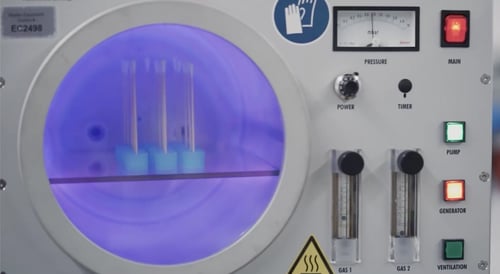Oxide etch is a wet etchant, which uses a chemical process rather than a dry plasma process to etch. Often called buffered
oxide etch or HF etch, this process utilizes the corrosive properties of Hydrofluoric acid to etch materials until the desired shape and surface properties have been achieved. This process is called a “buffered”
oxide etch because concentrated hydrofluoric acid reacts too quickly and makes an uncontrolled etch. When mixed with a buffering agent, like ammonium fluoride, the
oxide etch is slower and more controlled.
Buffered Oxide Etch vs. Plasma Etch
The main application for a buffered
oxide etch is etching silicon wafers for the microfabrication industry. While buffered
oxide etching is an adequate tool for etching wafers, plasma etching is a far superior process. Plasma etching creates a more precise etch and is much safer.
Oxide etches require the handling of potent hydrofluoric acid solutions that can leave serious burns if it comes into contact with skin. There is also an issue of dealing with proper disposal of hazardous byproducts whereas plasma treatments leave behind no harmful waste.

